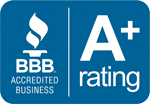This year provides traditional IRA and 401(k) owners a unique opportunity: It may be a great time to move retirement assets from these and other tax-advantaged retirement accounts to a Roth IRA.
Here’s why: Once they reach age 72, most IRA and 401(k) owners normally must begin taking a minimum amount out of their accounts. These withdrawals are called required minimum distributions, or RMDs.
But for 2020, the Coronavirus Aid, Relief and Economic Security Act (CARES Act) waives the usual requirement for most investors age 72 and older to take RMDs. That means you now have the option to take a smaller distribution or no distribution at all. This would have the effect of lowering your taxable income for the year and thereby reducing your tax bill.
But it may make sense for you to take some withdrawals anyway – and convert those amounts to a Roth IRA.
The CARES Act provides you with a unique opportunity: Normally, when you take an RMD, you must first pay the income tax due on that amount. Then you roll over what’s left after you pay Uncle Sam.
But for 2020, and this year only, the CARES Act allows you to roll your entire RMD directly to a Roth. You can pay any income taxes due with money from outside your retirement account.
Who should consider a Roth conversion?
Consider a Roth conversion this year if you meet some or all of the following criteria:
• You have a large 401(k), 403(b), SEP IRA, or SIMPLE IRA that is eligible for conversion to a Roth.
• You expect your income this year to be unusually low.
• You can pay the taxes due out of your own pocket, without having to touch retirement accounts.
• You expect to be in a higher income tax bracket in future years.
Advantages
There are several advantages to this strategy:
• You are shifting income from a tax-deferred bucket to a tax-free bucket: Once assets are safely in the Roth for five years, all their growth flows to you tax-free.
• It reduces all your future RMDs from the remaining tax-deferred assets in your retirement account.
• Roth IRAs do not require RMDs.
Disadvantages
When you convert IRA or 401(k) assets to a Roth, you effectively increase your taxable income for the year. For some taxpayers, this can cause unwelcome side effects:
• You could push yourself into a higher marginal tax bracket.
• You could trigger or increase taxes on Social Security income.
• You could trigger an increase in premiums for Part B or Part D Medicare or both.
So, be sure you understand the totality of the tax and financial situation before you execute a Roth conversion.
This opportunity isn’t limited to traditional IRA distributions. You can also execute the strategy with a 401(k), 403(b), SEP, or SIMPLE IRA. However, you cannot do a direct rollover with an inherited IRA.




